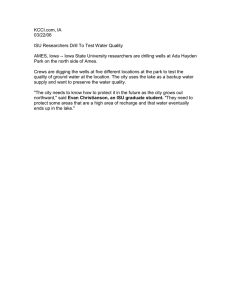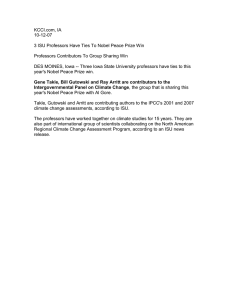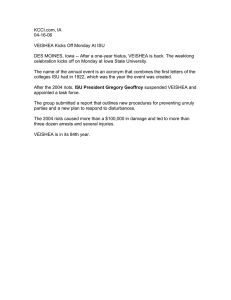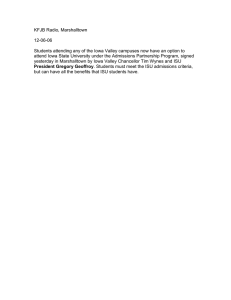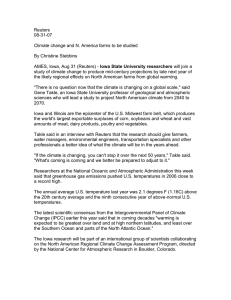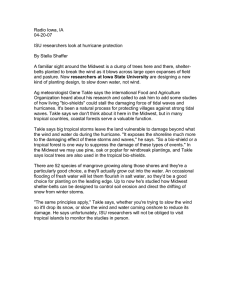Dakota Farmer, OR 08-08-07 How Will Global Warming Affect U.S. Corn Belt?
advertisement
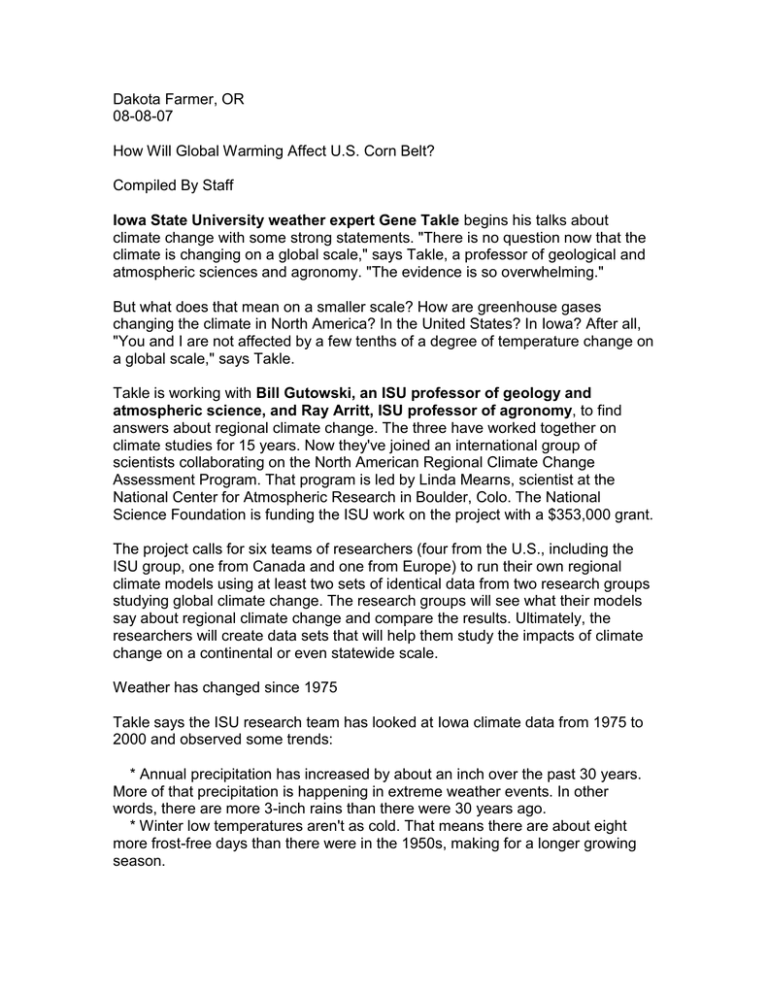
Dakota Farmer, OR 08-08-07 How Will Global Warming Affect U.S. Corn Belt? Compiled By Staff Iowa State University weather expert Gene Takle begins his talks about climate change with some strong statements. "There is no question now that the climate is changing on a global scale," says Takle, a professor of geological and atmospheric sciences and agronomy. "The evidence is so overwhelming." But what does that mean on a smaller scale? How are greenhouse gases changing the climate in North America? In the United States? In Iowa? After all, "You and I are not affected by a few tenths of a degree of temperature change on a global scale," says Takle. Takle is working with Bill Gutowski, an ISU professor of geology and atmospheric science, and Ray Arritt, ISU professor of agronomy, to find answers about regional climate change. The three have worked together on climate studies for 15 years. Now they've joined an international group of scientists collaborating on the North American Regional Climate Change Assessment Program. That program is led by Linda Mearns, scientist at the National Center for Atmospheric Research in Boulder, Colo. The National Science Foundation is funding the ISU work on the project with a $353,000 grant. The project calls for six teams of researchers (four from the U.S., including the ISU group, one from Canada and one from Europe) to run their own regional climate models using at least two sets of identical data from two research groups studying global climate change. The research groups will see what their models say about regional climate change and compare the results. Ultimately, the researchers will create data sets that will help them study the impacts of climate change on a continental or even statewide scale. Weather has changed since 1975 Takle says the ISU research team has looked at Iowa climate data from 1975 to 2000 and observed some trends: * Annual precipitation has increased by about an inch over the past 30 years. More of that precipitation is happening in extreme weather events. In other words, there are more 3-inch rains than there were 30 years ago. * Winter low temperatures aren't as cold. That means there are about eight more frost-free days than there were in the 1950s, making for a longer growing season. * Summer heat isn't as intense as it was 30 years ago, but the humidity is rising. If those trends continue, climate change in the American Midwest could be good for agriculture over the next 10 to 20 years. But researchers are looking for more answers as they develop their regional climate models. Looking ahead to year 2040 and beyond The research teams started working on the climate change assessment program about 18 months ago. The first task was to develop methods to manage and share data. The research groups have moved on to testing their models by running them with climate data from 1979 to 2004 and comparing the results to what actually happened. The models represent conditions in the middle of the atmosphere very well, but have a harder time showing the distribution of summer rains. The research groups are now preparing to use data from global climate models to run climate simulations for the years 2040 to 2070. Be prepared for even more changes in climate Arritt says the results of those simulations will give researchers a good idea about the range of possibilities for climate change across North America. He also says it's a tremendous boost for researchers to work with six different climate models and multiple sets of data. "As you know, no simulation or forecast is perfect," he said. "By running a lot of different simulations we can see how wide the window is." Then researchers can look at averaging the results to get a more reliable forecast of what kind of climate North Americans can expect by mid-century, Arritt says. The models could have something to say about Iowa's weather, too. The ISU team is working with a model that has grid points every 30 miles. That works out to about one point per Iowa county. "That should provide a pretty good picture of the state's future climate," says Takle. "And that's valuable information for all of us. If the climate is changing, you can't stop it over the next 50 years. What's coming is coming and we better be prepared to adjust to it."
